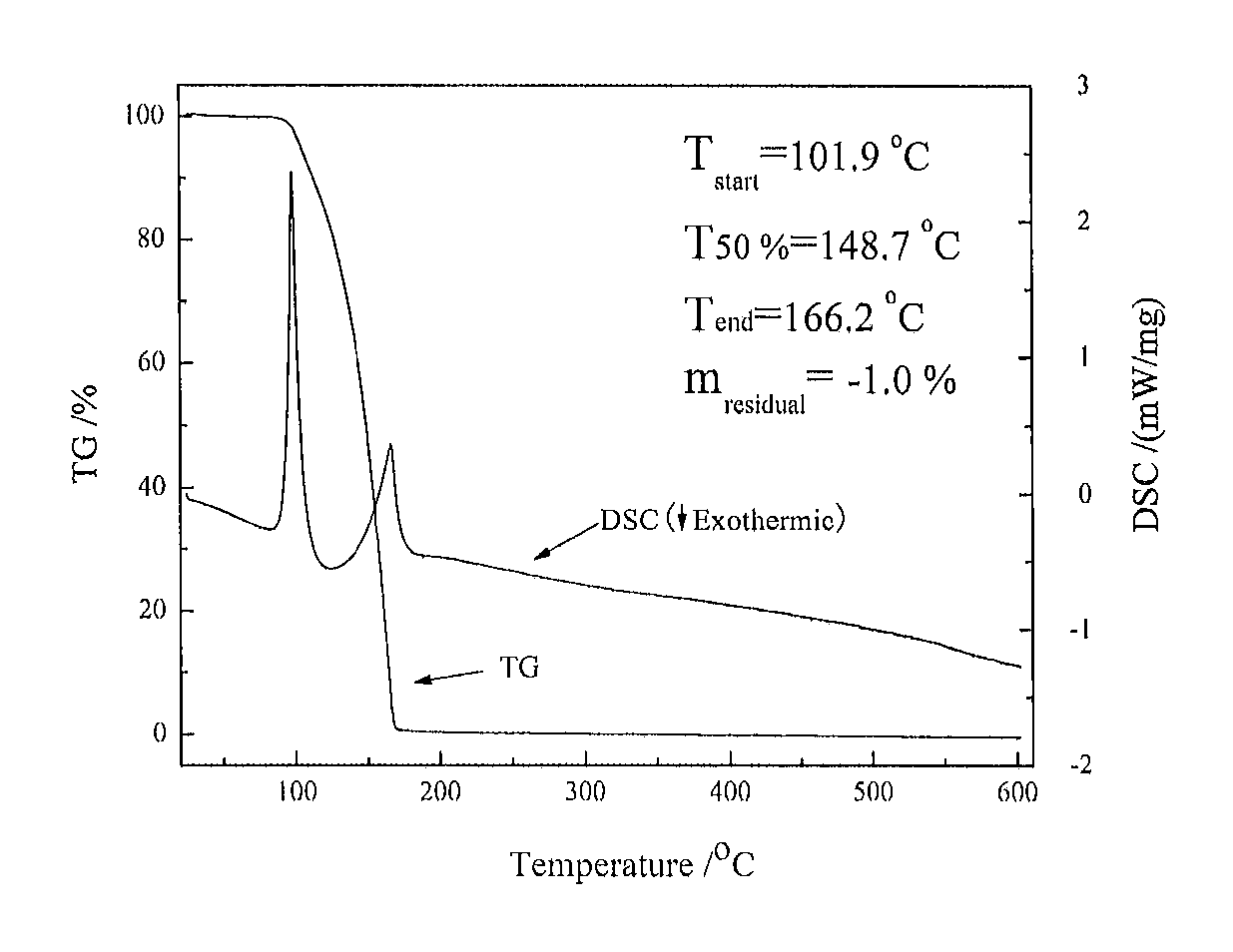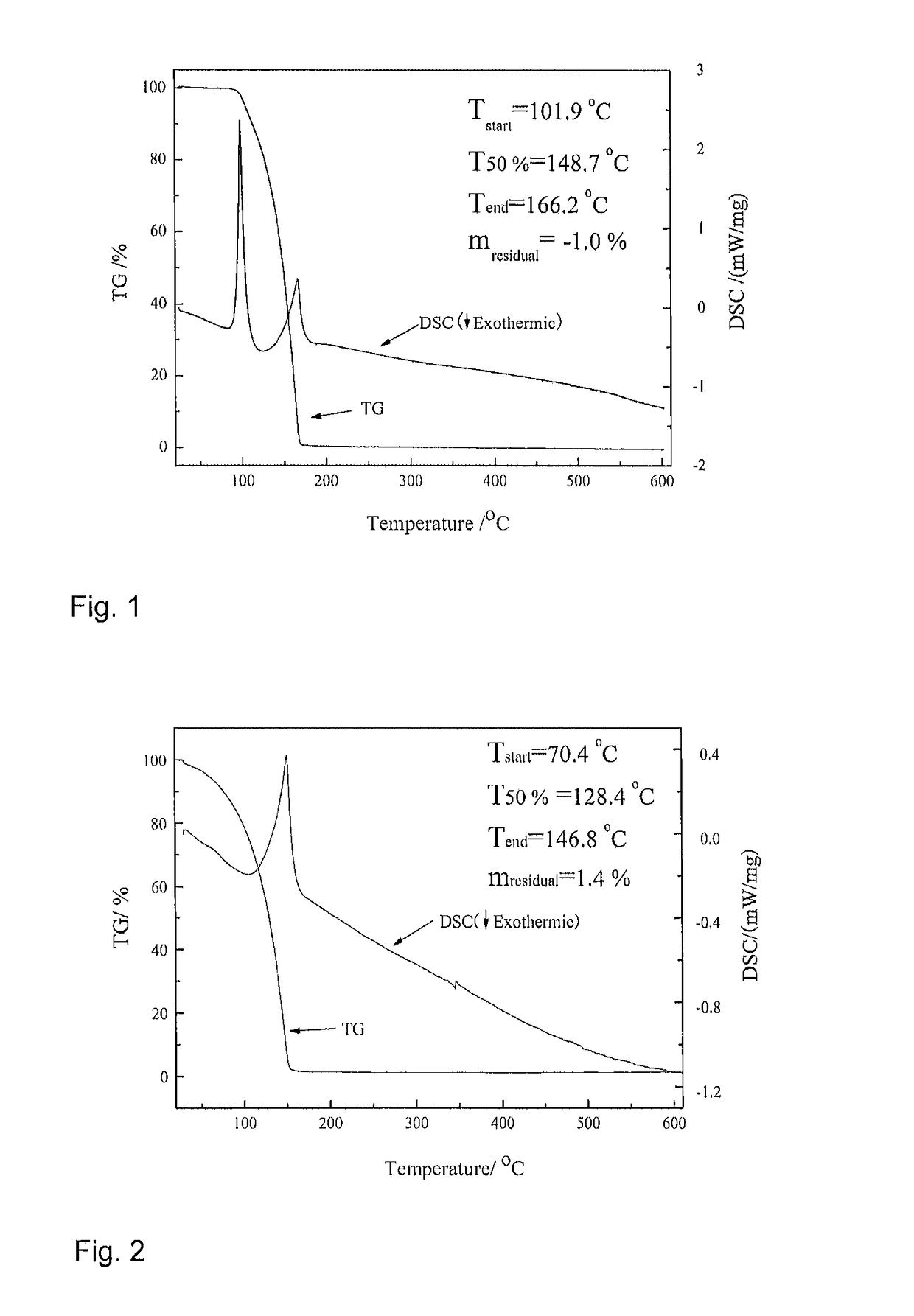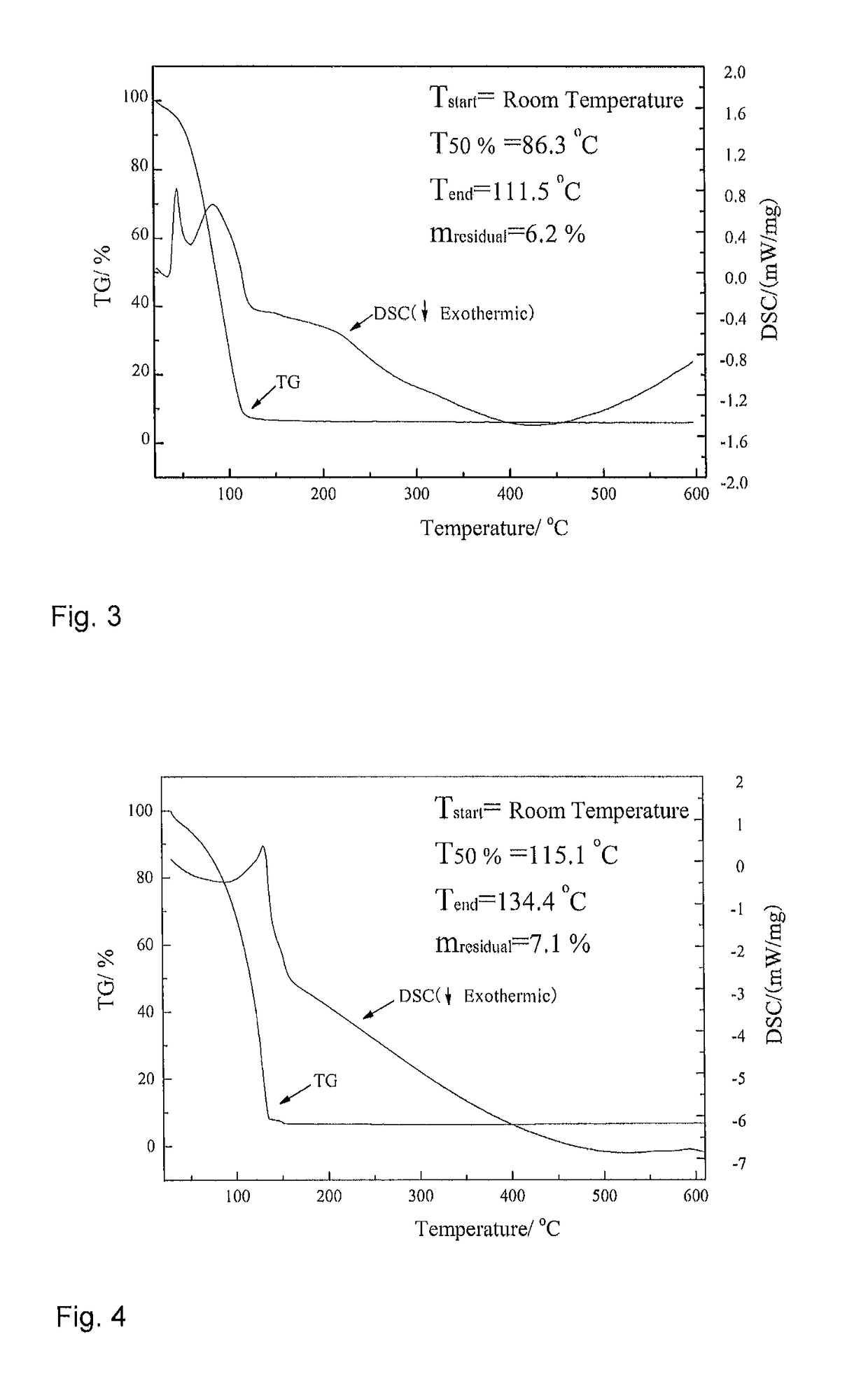Aluminum precursors for thin-film deposition, preparation method and use thereof
- Summary
- Abstract
- Description
- Claims
- Application Information
AI Technical Summary
Benefits of technology
Problems solved by technology
Method used
Image
Examples
example 1
(1) Example 1
[0042]30.0 mmol of trimethylsilylaminopyridine was placed into a reaction vessel (a Schlenk flask with a magnetic stirrer), and 100 mL of n-hexane was then added thereto and stirred uniformly. Then, 30.0 mmol of trimethyl aluminum (TMA) was slowly added to the reaction system at a low temperature (−78° C.), air bubbles were generated without a significant change in color. The reaction system was allowed to room temperature and stirred for 3 h, and then heated to 60° C. for reflux overnight. Subsequently, the stirring was stopped, and the reaction was concentrated by removing the solvent under low pressure with a vacuum pump, to afford a colorless solution. The solution was then purified by distillation using a reduced pressure distillation device at 80° C. The fraction thus obtained was 2-trimethylsilylaminopyridine dimethyl aluminum (1#), which was placed under room temperature to form an acid-base complex, i.e., the solid dimer thereof.
example 2
(2) Example 2
[0043]24.0 mmol of trimethylsilylaminopyridine was placed into a reaction vessel, and 100 mL of n-hexane was then added thereto and stirred uniformly. Then, 30.0 mmol of trimethyl aluminum (TMA) was slowly added to the reaction system at a low temperature (−65° C.), air bubbles were generated but without a significant change in color. The reaction system was allowed to room temperature and stirred for 4 h, and then heated to 70° C. for reflux overnight. Subsequently, the stirring was stopped, and the reaction system was concentrated by removing the solvent under reduced low pressure with a vacuum pump, to afford a colorless solution. The solution was then purified by distillation using a reduced pressure distillation device at 85° C. The fraction thus obtained was 2-trimethylsilylaminopyridine dimethyl aluminum (2#), which was placed under room temperature to form an acid-base complex, i.e., the solid dimer thereof.
example 3
(3) Example 3
[0044]20.0 mmol of trimethylsilylaminopyridine was placed into a reaction vessel, and 100 mL of n-hexane was then added thereto and stirred uniformly. Then, 30.0 mmol of trimethyl aluminum (TMA) was slowly added to the reaction system at a low temperature (−50° C.), air bubbles were generated but without a significant change in color. The reaction system was allowed to room temperature and stirred for 5 h, and then heated to 75° C. for reflux overnight. Subsequently, the stirring was stopped, and the reaction system was concentrated by removing the solvent under reduced low pressure with a vacuum pump, to afford a colorless solution. The solution was then purified by distillation using a reduced pressure distillation device at 85° C. The fraction thus obtained was 2-trimethylsilylaminopyridine dimethyl aluminum (3#), which was placed under room temperature to form an acid-base complex, i.e., the solid dimer thereof.
PUM
| Property | Measurement | Unit |
|---|---|---|
| Temperature | aaaaa | aaaaa |
| Temperature | aaaaa | aaaaa |
| Temperature | aaaaa | aaaaa |
Abstract
Description
Claims
Application Information
 Login to View More
Login to View More - R&D
- Intellectual Property
- Life Sciences
- Materials
- Tech Scout
- Unparalleled Data Quality
- Higher Quality Content
- 60% Fewer Hallucinations
Browse by: Latest US Patents, China's latest patents, Technical Efficacy Thesaurus, Application Domain, Technology Topic, Popular Technical Reports.
© 2025 PatSnap. All rights reserved.Legal|Privacy policy|Modern Slavery Act Transparency Statement|Sitemap|About US| Contact US: help@patsnap.com



